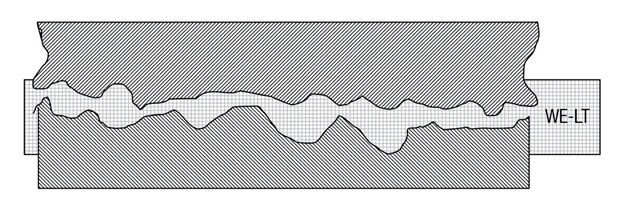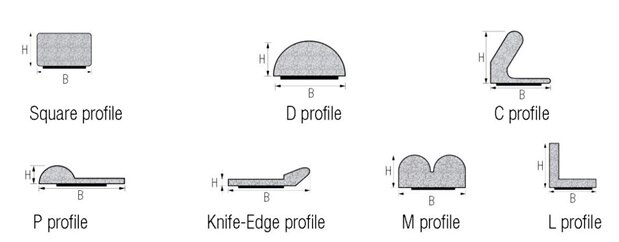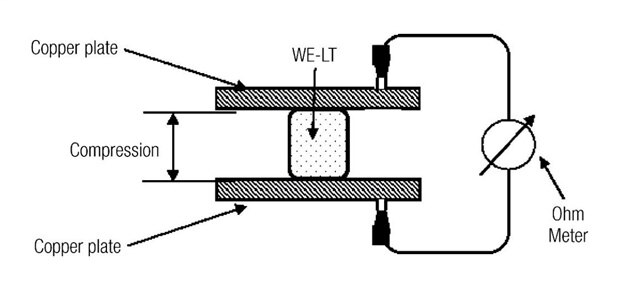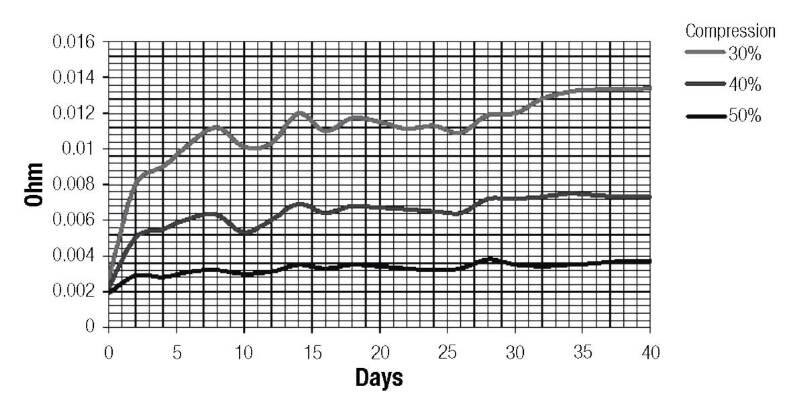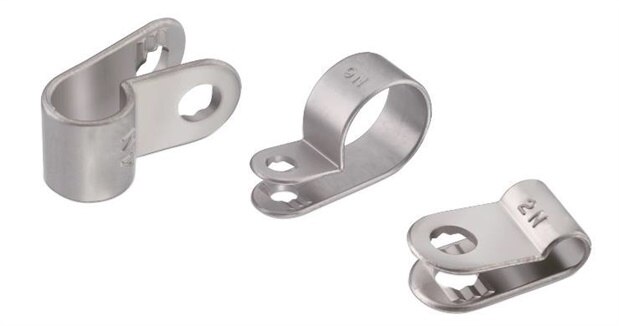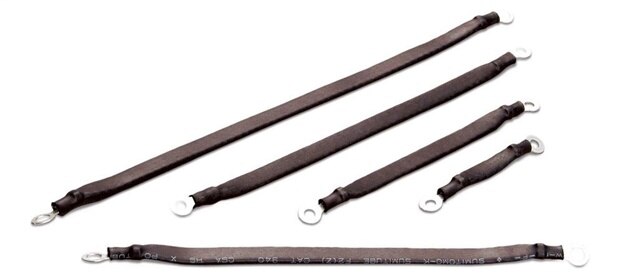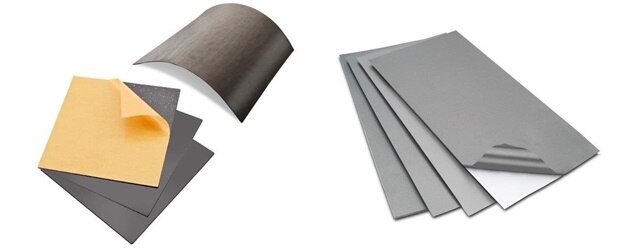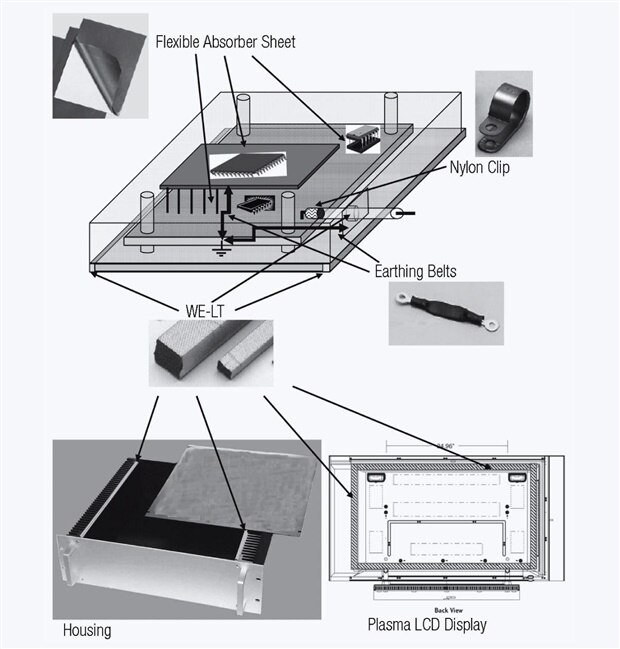Effective EMI shielding concepts
ANP043, BY LORANDT FÖLKEL
Despite all extensively discussed and recommended design rules for the EMC conformity design of components, the interaction between different functional groups within an apparatus can often lead to unwanted side effects when tested in the EMC laboratory. Although installed in a metal casing, it can happen that the emitted interference radiation is above the threshold.
1. What has happened?
Most of the times, the metal casing itself is not part of the electronics development but is developed by the construction/mechanical department. They make sure that the openings in the casing, e.g. for cable inlets and outlets, ventilation slots, operating buttons, speakers, transducers or displays and all of these can cause a massive reduction of the shielding action. But within the openings of the metal casing, it is not possible to have a complete seal of both halves and so without overlap the result is that RF emissions can pass through.
2. “Why is this happening?"
If you look at a flat metal surface microscopically, you begin to see the imperfections. You will find that the material is uneven, with roughness on the surface. Therefore in the metal case itself there is no continuous connection between these two surfaces. Consequently, the seal (or meeting point) is interrupted by slots and if you look at the joining from a RF-technical point of view, it is “highly vulnerable”. These slots and apertures, which were formed due to the roughness, cause an open gate for shortwave radiation to break out/in from the shielding cage (see Figure 1).
Fig. 1: Reduced shielding effect of casings due to apertures
Suggestion to solve the problem:
The solution to the problem lies in the bridging and sealing of these apertures. For that purpose, our conductive textile gaskets WE-LT is an excellent fix (see Figure 2).
Fig. 2: Sealing of the slots and “apertures” using conductive gaskets WE-LT
The conductive gaskets are available in following profiles:
Fig. 3: Available profiles of the WE-LT
The conductive gasket requirements are always very different and depend on the purpose for which it is used. From practical experience the following minimum standard has proven itself:
- UL94-V0 approved material combinations (always necessary if the end product is for the US market)
- Protection against rough environmental conditions (dust/humidity)
- Good surface conductivity to obtain a low impedance connection
- Double-sided adhesive tape as fixation and mounting aid
For the application of conductive gaskets a certain minimum compression is necessary in order to keep the transitional resistance steadily low. Long term studies with different compressions have shown that the mounting compression of the gaskets influences the conductivity over time (see Figure 5). A steady compression for contact surfaces of at least 50% is necessary in order to keep the transitional resistance over a long period of time low and steady.
Fig. 4: Test setup surface resistance WE-LT vs. compression
Fig. 5: Long-term run surface resistance vs. compression
The typical surface resistance of the series WE-LT is below 8 mOhm. The achieved shielding effect is approx. 80 dB at 100 MHz and approx. 75 dB at 1 GHz (according to MIL 285 standard).
Positive side effect: At the same time the gaskets fulfill protection class IP54 for dust and water protection:
IP = International Protection
First Index: Foreign Body Protection, Solids |
IP0X No special protection |
IP1X Back of hand, fist large foreign bodies, diam. >50 mm |
IP2X Finger medium-sized foreign bodies, diam. >12 mm |
IP3X Tools and wires etc. with a thickness >2.5 mm; Small foreign bodies, diam. >2.5 mm |
IP4X Tools and wires etc. with a thickness >1 mm; Granular foreign bodies, diam. >1 mm |
IP5X Complete protection (limited ingress permitted); Dust protected; dust deposits are permitted, must not affect the function of the unit |
IP6X Complete protection; dust-proof |
Second Index: Water Protection, Liquids |
IPX0 No special protection |
IPX1 Water dripping/falling vertically condensation/light rain |
IPX2 Water sprayed at an angle (up to 15º degrees from the vertical), light rain with wind |
IPX3 Spray water (any direction up to 60º degrees from the vertical), heavy rainstorm |
IPX4 Spray water from all directions (limited ingress permitted), splashing |
IPX5 Low pressure water jets from all directions (limited ingress permitted), hose down, residential |
IPX6 High pressure jets from all directions (limited ingress permitted), hose down, commercial, eg Ship decks |
IPX7 Temporary immersion, 15 cm to 1m immersion in tank |
IPX8 Permanent immersion, under pressure for use on titanic recovery vehicle |
Tab. 1: IP key numbers
When you put in contact different conductive materials, a galvanic process takes place, which leads to the corrosion of the contact surfaces. As a result the oxide layer, which has developed, isolates the two surfaces against each other instead of providing for a very good electric connection. For practical applications the following table (Tab. 1) should be considered in order to prove the suitability of the material and hence guarantee long durability.
Suitability of the material matching for WE-LT: |
|
+ Aluminium (Al) | ++ Chrome / Silver stainless steel 13% Chrome (passive) |
+ Iron (Fe) | ++ Chromatized Steel 18%, Brass (La) |
+ Rhodium (Rh) | ++ stainless steel 13% Chrome (active) |
++ Silver (Ag) | ++ steinless steel 18% Chrome 8% Nickel (passive) |
- steel galavanized | -- Magnesium alloys |
++ Titan (Ti) | ++ Monel, Nickel (Ni), Cooper (Cu) |
- Zinc (Zn) | + Platinum (Pl), Gold (Au), Carbon (C) |
++ Stannous (Sn) |
|
Tab. 2: Material matching (– – unsuitable; – less recommended; + recommendable; ++ very suitable)
Effective mechanical/electrical connection to minimize the noise
Another shielding mistake which can occur when shielded cable connection to the GND, from a shielded cable, thought an intertwined connection (called “Pig Tails”) are kept too long are used. The result is a high impedance connection and will not give a good path for the noise to travel to GND. It is recommended that all cable connection are using a shielding connection which are low impedance to the GND. This can be solved very easily, using Conductive Nylon Clips (Figure 6).
Fig. 6: Conductive Nylon Clips
Conductive Nylon Clips are available for cables from 3mm to 15mm in diameter. They are very flexible, extremely low weight and without sharp edges. In this way the cables are well connected and also well fixed to the board without damaging the shielding cable. The connection between the PCB and casing (housing) should also be considered when thinking of EMC issues. Normally the steel spacer studs used are not the best solution because of undefined connection from the PCB to GND. The better solution would be to use Earthing Belts (Figure 7). These Earthing belts provide a solid connection, wider range of frequencies to travel through and so will reduce unwanted noise.
Fig. 7: Earthing Belts
If the system contains several PCB’s in same housing, very close to each other, some uncalculated coupling from PCB to PCB can occur. Those couplings are most in high frequencies and can be solved using a metal cage around the PCB’s. This system called “Zone Concept” can be useful, but is most of the time too expensive. A much more cost effective solution is the use of Flexible Absorber Sheets (Figure 8) which are glued directly to the PCB. The Ferrite Sheet already has the double sided adhesive attached to it. These absorber materials do not need to be grounded or connected to any other device. Because they are very flexible they can be molded even over the components (please avoid high temperatures!).
The shielding is realized through the absorption principle the magnetic field energy is transformed into heat (∆K can’t be measured).
Fig. 8: Flexible Absorber Sheets
Fig. 9: Applications
The Application Note is based on our knowledge and experience of typical requirements concerning these areas. It serves as general guidance and should not be construed as a commitment for the suitability for customer applications by Würth Elektronik eiSos GmbH & Co. KG. The information in the Application Note is subject to change without notice. This document and parts thereof must not be reproduced or copied without written permission, and contents thereof must not be imparted to a third party nor be used for any unauthorized purpose. Würth Elektronik eiSos GmbH & Co. KG and its subsidiaries and affiliates (WE) are not liable for application assistance of any kind. Customers may use WE’s assistance and product recommendations for their applications and design. The responsibility for the applicability and use of WE Products in a particular customer design is always solely within the authority of the customer. Due to this fact it is up to the customer to evaluate and investigate, where appropriate, and decide whether the device with the specific product characteristics described in the product specification is valid and suitable for the respective customer application or not. The technical specifications are stated in the current data sheet of the products. Therefore the customers shall use the data sheets and are cautioned to verify that data sheets are current. The current data sheets can be downloaded at www.we-online.com. Customers shall strictly observe any product-specific notes, cautions and warnings. WE reserves the right to make corrections, modifications, enhancements, improvements, and other changes to its products and services.
WE DOES NOT WARRANT OR REPRESENT THAT ANY LICENSE, EITHER EXPRESS OR IMPLIED, IS GRANTED UNDER ANY PATENT RIGHT, COPYRIGHT, MASK WORK RIGHT, OR OTHER INTELLECTUAL PROPERTY RIGHT RELATING TO ANY COMBINATION, MACHINE, OR PROCESS IN WHICH WE PRODUCTS OR SERVICES ARE USED. INFORMATION PUBLISHED BY WE REGARDING THIRD-PARTY PRODUCTS OR SERVICES DOES NOT CONSTITUTE A LICENSE FROM WE TO USE SUCH PRODUCTS OR SERVICES OR A WARRANTY OR ENDORSEMENT THEREOF.
WE products are not authorized for use in safety-critical applications, or where a failure of the product is reasonably expected to cause severe personal injury or death. Moreover, WE products are neither designed nor intended for use in areas such as military, aerospace, aviation, nuclear control, submarine, transportation (automotive control, train control, ship control), transportation signal, disaster prevention, medical, public information network etc. Customers shall inform WE about the intent of such usage before design-in stage. In certain customer applications requiring a very high level of safety and in which the malfunction or failure of an electronic component could endanger human life or health, customers must ensure that they have all necessary expertise in the safety and regulatory ramifications of their applications. Customers acknowledge and agree that they are solely responsible for all legal, regulatory and safety-related requirementsconcerning their products and any use of WE products in such safety-critical applications, notwithstanding any applicationsrelated information or support that may be provided by WE. CUSTOMERS SHALL INDEMNIFY WE AGAINST ANY DAMAGES ARISING OUT OF THE USE OF WE PRODUCTS IN SUCH SAFETY-CRITICAL APPLICATIONS.
USEFUL LINKS
Application Notes: http://www.we-online.com/app-notes
REDEXPERT Design Tool: http://www.we-online.com/redexpert
Toolbox: http://www.we-online.com/toolbox
Product Catalog: http://katalog.we-online.de/en/
DIRECT LINK
ANP043: Effective EMI Shielding Concepts
CONTACT INFORMATION
Würth Elektronik eiSos GmbH & Co. KG
Max-Eyth-Str. 1, 74638 Waldenburg, Germany
Tel.: +49 (0) 7942 / 945 – 0
Email: appnotes@we-online.de


